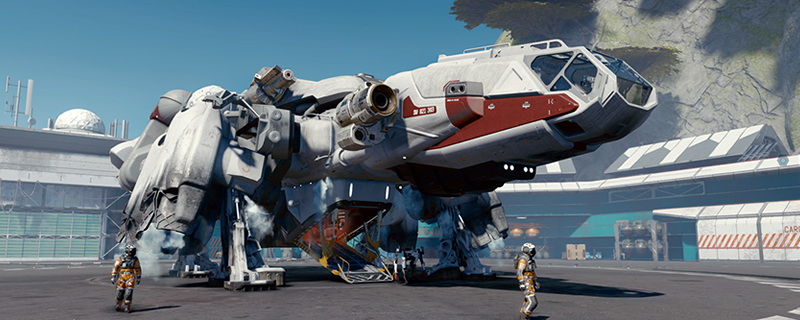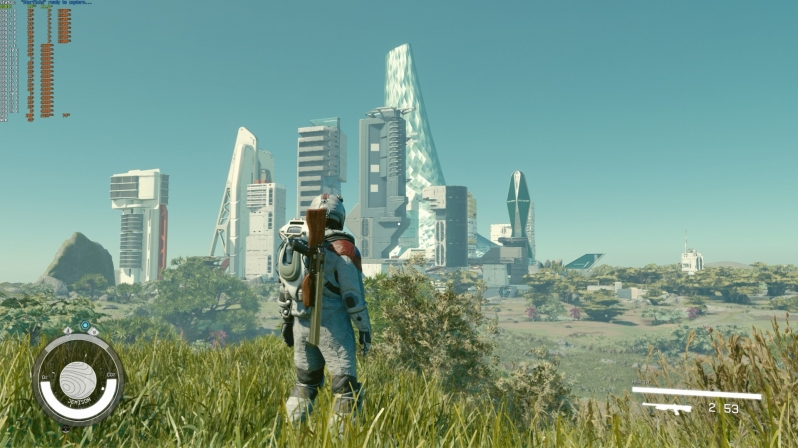Starfield PC Performance Review and Optimisation Guide
Conclusion – Starfield is a solid game, but there is room for improvement on PC
Starfield is a game that will no doubt be the game behind many PC hardware upgrades. Starfield is a game that can bring many PCs to their knees, and it practically relies on AMD’s FidelityFX Super Resolution technology to achieve 60 FPS framerates on most PC hardware configurations.
In hardware terms, Starfield is a mixed bag, as while the game is hugely demanding when it comes to GPU performance, it does not use a tonne of VRAM (GPU memory) like many other modern titles. On our RTX 4090 graphics card at 4K, Starfield barely utilised more than 8GB of memory, and at 1080p the game ran fine on 6GB graphics cards. While this is great news for gamers with 6GB or 8GB graphics cards, the negative is that Starfield fails to utilise the high frame buffers of modern GPUs. Starfield is a game that is crying out for a high resolution texture pack on PC, as many textures are low resolution, and many modern GPUs have a lot of additional memory to utilise. It won’t be long before Starfield receives a high resolution texture pack on PC.
When it comes to performance scaling on PC, Starfield is a game that gives gamers relatively few options. If you need a performance boost, there isn’t much that the game’s graphical settings can do for you. Without upscaling, moving from Ultra settings to Low settings will new gamers framerate gains of around 45% in our GPU test area, which isn’t much given how demanding Starfield is at Ultra settings. Even GPUs like Nvidia’s RTX 4070 do not hit average framerates of over 60 FPS in our Starfield test area, and those performance levels are not that uncommon in Starfield.
CPU-wise, it is clear that Starfield can make effective use of 6 or more CPU cores, but it is also clear to us that this game is mostly GPU-limited, as even our RTX 4090 and RX 7900 XTX are GPU-limited at 1080p. While we do see some benefits to playing Starfield with faster memory, CPU performance was not found to be a major concern during our testing.
In general, Starfield appears to be a game that favours GPUs that feature a lot of available memory bandwidth, which means that the game favours GPUs with large caches, fast GPU memory, and wide memory buses. This is perhaps why AMD’s RX 7900 XTX performs on par with Nvidia’s RTX 4090, and why AMD’s RX 7900 XT can surpass Nvidia’s RTX 4080 by a huge margin. GPUs like AMD’s Radeon RX 6800 XT also performs well, thanks to its Infinity Cache, GDDR6 memory and 256-bit memory bus.
Starfield is a game that, for the most part, favours AMD GPU hardware, but it cannot be claimed that the game is easy to run on AMD GPUs. Starfield is hard on all GPU hardware, and that means that FSR 2 will be a must use feature for many gamers. This makes it all the more disappointing that Starfield does not feature DLSS support or XeSS support.
With FSR 2 having noticeable graphical artifacts in Starfield, it is easy to see why Nvidia RTX users are crying out for a DLSS patch. While FSR 2 is a great solution if developers only want to add support for one upscaler, it is preferable for games to support a plurality of upscaling solutions, especially when one company’s solution can deliver better visual results than another’s. In general, DLSS Super Resolution delivers better results than FSR 2, and that reason alone will make FSR 2 exclusivity a huge negative for any Nvidia RTX GPU user.
An SSD is a must
With the amount of time that you will be moving from area to area or planet to planet, I will can SSD storage a must for Starfield. Loading screens are short in Starfield, but they are frequent, so I expect all Starfield players on PC to utilise SSD storage, unless you enjoy a lot of waiting between your bursts of gameplay.
This game is crying out for DLSS 3 support and FSR 3 support
Starfield is a hugely demanding game on PC, and that makes frame generation technologies like AMD’s FSR 3 and Nvidia’s DLSS 3 technologies highly sought after add-ons for Starfield. Frame Generation features would enable higher framerate gameplay in Starfield for a lot of players, and could even make 4K 120 Hz gameplay possible for ultra-high-end PCs with the right graphical settings.
Memory bandwidth limitations?Â
In general, Starfield appears to run best on graphics cards with large caches, and a lot of available memory bandwidth, and this is a sign that Starfield’s performance on PC is limited by memory bandwidth. Perhaps this is something that Bethesda could optimise with future Starfield updates, as a focus on GPU memory bandwidth efficiency could result in notable performance gains for all PC gamers.
With Starfield being a demanding as it is on PC, it makes sense to us why the game is locked to 30 FPS on Xbox Series consoles, and why the game relies on FSR 2 as part of the game’s default graphical presets. If Starfield’s PC performance does not improve with future game updates, I expect to see a huge generational leap in performance with next-generation GDDR7 based GPUs in Starfield, as those GPUs should have the bandwidth to power though this game. Well, assuming I am right about this game’s memory bandwidth limitations.
Starfield is a great game, but it is a performance hog
Starfield is a PC game that I expect to fuel a lot of PC hardware upgrades over the coming years. The game is incredibly hard on graphics cards, and I expect this game to be a major benchmark for future GPU launches. While the game itself is filled with a lot of great content, the game’s PC version is let down by its high hardware requirements that often feel too high for the visuals that Starfield produces. That said, Starfield can produce incredible visuals, and while some areas of the game look better than others, Starfield is a visual treat on PC.
If you want to play Starfield on PC, know that this game is a demanding one. You will likely need to use lower graphical settings than you are used to, or rely more heavily on upscaling than you typically would. Currently, the game only supports AMD’s FidelityFX Super Resolution technoligy, but modders have already worked to mod in support for XeSS and DLSS into the game.
You can join the discussion on Starfield’s PC version on the OC3D Forums.




